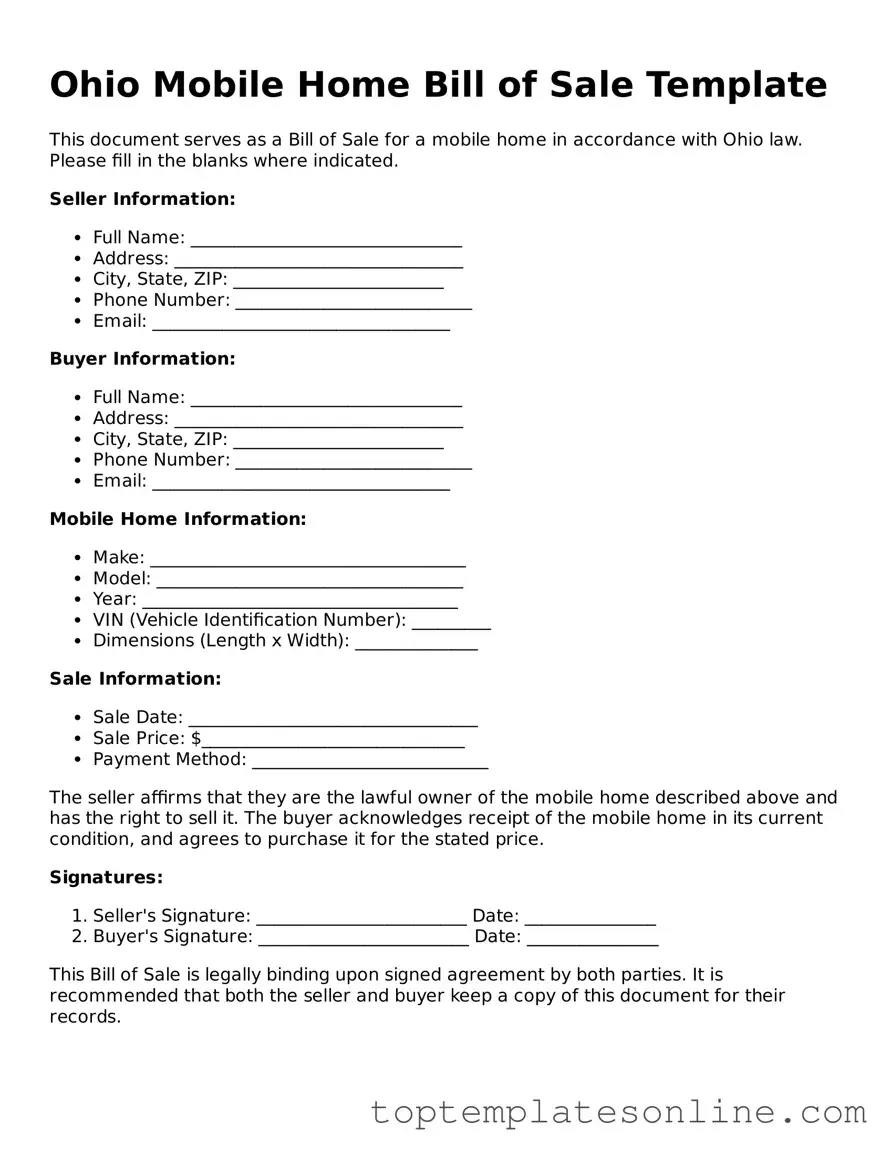Blank Mobile Home Bill of Sale Template for Ohio State
The Ohio Mobile Home Bill of Sale is a legal document used to transfer ownership of a mobile home from one party to another. This form outlines essential details such as the buyer and seller's information, the mobile home's description, and the sale price. Properly completing this document ensures a smooth transaction and protects both parties involved.
Customize Mobile Home Bill of Sale Here
